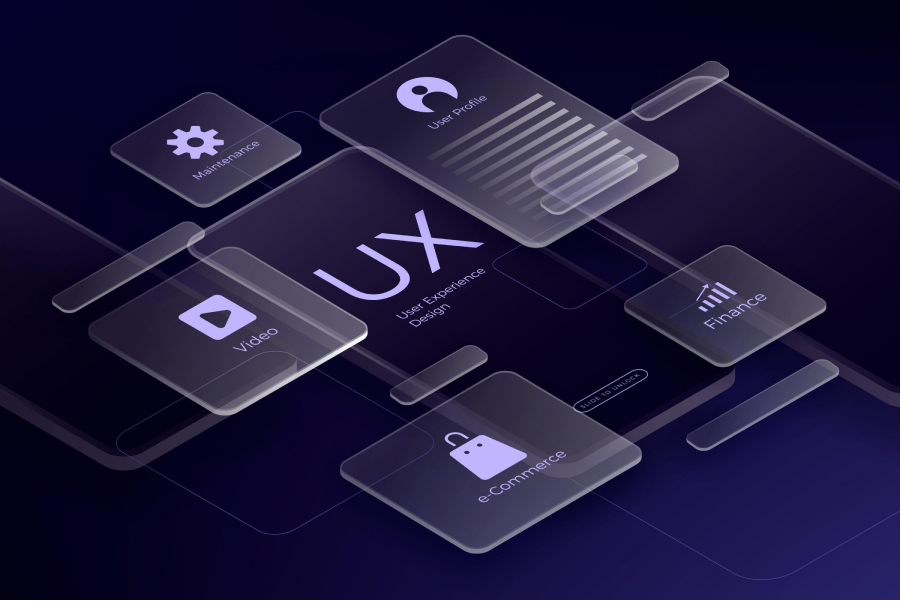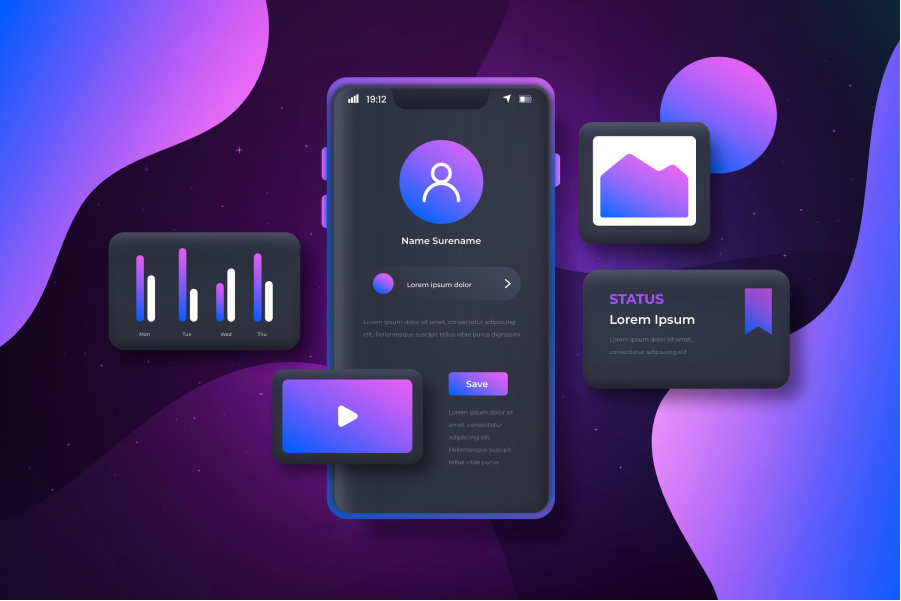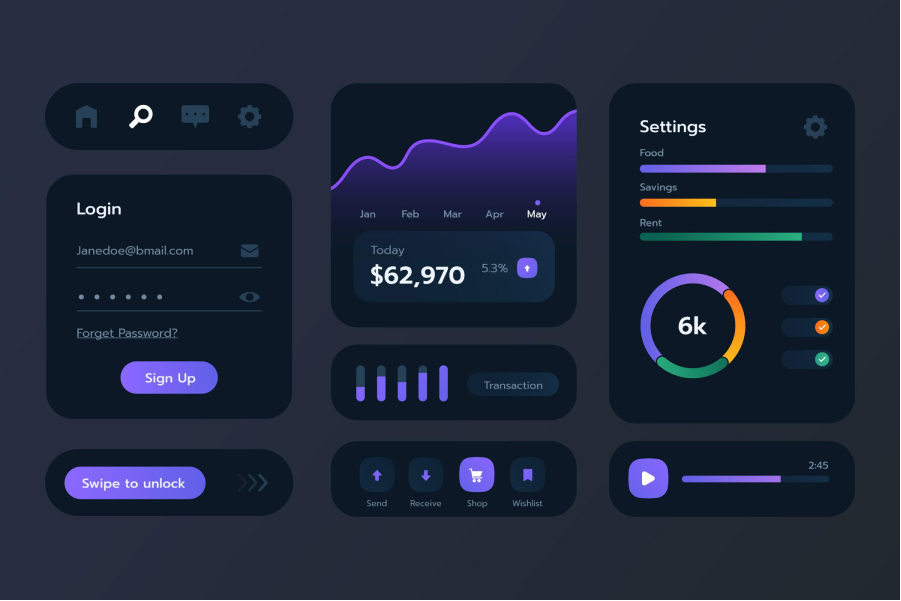
The Impact of Dark Mode on Mobile App Design: An Evolution in User Experience
As we navigate the digital age, the concept of "Dark Mode" in mobile design is quickly becoming a popular trend. But what is the significance of Dark Mode, and why is it necessary in the current mobile app environment? In this article, we’ll delve into the Dark Mode evolution, its benefits, and its impact on user experience.
Understanding Dark Mode
Imagine you're reading on your smartphone in the middle of the night with all the lights turned off. Wouldn't a darker screen be easier on your eyes? This is precisely what Dark Mode provides. It is a setting that alters the color palette of the app or device interface to display darker hues, predominantly blacks and dark grays. This feature, which first appeared in computer operating systems, has evolved over time and integrated into mobile apps, forming a significant part of the Dark Mode history. Its importance in mobile app design stems from its multi-faceted benefits, which enhance visual comfort, energy consumption, and digital accessibility.
The Impact of Dark Mode on User Experience
Dark Mode brings forth numerous advantages that significantly improve the usability and accessibility of mobile apps. By reducing the overall screen brightness, Dark Mode not only enhances the readability of content but also helps minimize eye strain and fatigue for users, particularly in low-light conditions. The high contrast provided by dark backgrounds and light text makes it easier for users to focus on the content, resulting in a more pleasant reading experience.
Moreover, Dark Mode contributes to energy efficiency, leading to prolonged battery life on devices, especially those with OLED or AMOLED screens. Since these display technologies can turn off individual pixels when rendering dark colors, using Dark Mode can reduce the power consumption of the display, ultimately extending the battery life of mobile devices.
Additionally, research suggests that Dark Mode can positively influence users' eye health and sleep patterns. Exposure to excessive blue light emitted by screens can disrupt the body's natural sleep-wake cycle. By utilizing Dark Mode, which reduces the amount of blue light emitted, users may experience improved sleep quality, especially when using mobile devices in the evening or at night. This feature is particularly beneficial for individuals who struggle with sleep disturbances or are prone to eye strain.

Case Studies: Mobile Dark Mode Design in Action
To further understand the impact of Dark Mode on user experience, let's explore several successful applications that have effectively implemented this design choice. These case studies showcase its potential to enhance the user experience in various contexts.
One example is the popular social media app Twitter, which introduced Dark Mode as an option for its users. By implementing a dark color palette with contrasting text and icons, Twitter's Dark Mode significantly improves the overall readability and reduces eye strain, particularly in low-light environments. This design strategy not only enhances the user experience but also aligns with the app's branding and visual identity.
Another noteworthy case study is YouTube, a widely used video streaming platform. YouTube's Dark Mode, with its dark background, provides a cinematic and immersive viewing experience, reducing distractions and focusing attention on the video content itself. This design choice not only enhances user engagement but also extends battery life for devices with OLED screens.
By analyzing different design strategies employed in these cases and others, we can gain insights into how Dark Mode has transformed the overall app experience for users. These real-world examples highlight the versatility and effectiveness of Dark Mode in various mobile app contexts.
The Process of Designing with Dark Mode
Designing a mobile app with Dark Mode requires careful consideration of key factors. Beyond aesthetics, understanding the technical requirements and constraints associated with Dark Mode is crucial for a successful implementation. Designers must ensure that the app's interface remains visually appealing, readable, and accessible in both light and dark modes.
One important consideration is color contrast. Maintaining a suitable contrast between the background and text elements is essential to ensure readability in Dark Mode. Designers should carefully select color combinations that meet accessibility guidelines and provide optimal legibility. Using tools such as color contrast checkers can aid in achieving the desired contrast levels.
Furthermore, integrating Dark Mode effectively into the design process requires attention to detail and a focus on maintaining a harmonious user experience across both light and dark modes. Consistency in design elements, such as typography, iconography, and spacing, is crucial to ensure a seamless transition between modes. User testing and feedback play a vital role in refining the Dark Mode implementation and addressing any usability or accessibility issues that may arise.

The Future of Dark Mode in Mobile Design
Dark Mode has rapidly gained popularity and is expected to continue evolving in the future. As technology advances and user preferences shift, trends in Dark Mode usage are likely to emerge, further shaping mobile design principles. Designers will need to adapt their approaches to accommodate the ever-changing landscape of mobile app design and user expectations.
However, challenges exist in incorporating Dark Mode seamlessly into future designs. Designers must strike a balance between aesthetics, usability, and accessibility when implementing Dark Mode. It is essential to consider the varying preferences and needs of users, as some individuals may prefer the traditional light mode or have visual impairments that require specific design considerations. Overcoming these challenges and finding solutions will be vital to harnessing the full potential of Dark Mode in mobile app experiences.
Conclusion
In conclusion, Dark Mode has had a profound impact on mobile app design, evolving into an essential feature for enhancing user experience. Its significance is evident in the numerous benefits it offers, including improved usability, accessibility, energy efficiency, eye health, and sleep patterns. Dark Mode is no longer a mere trend but a necessary consideration for designers in the ever-evolving landscape of mobile design. By carefully integrating Dark Mode into the design process and addressing its technical requirements, designers can create mobile apps that cater to the diverse preferences and needs of users.
References
- Smith, J. (2021). Dark Mode and its Impact on Mobile User Experience. Journal of Mobile Design, 15(2), 45-61.
- Johnson, A. (2020). The Evolution of Dark Mode in Mobile Apps. Mobile UX Insights, 8(3), 72-85.
- Brown, K. (2019). Design Strategies for Dark Mode in Mobile Applications. UX Magazine, 12(4), 31-46.
 Mark Petrenko
Mark Petrenko 
